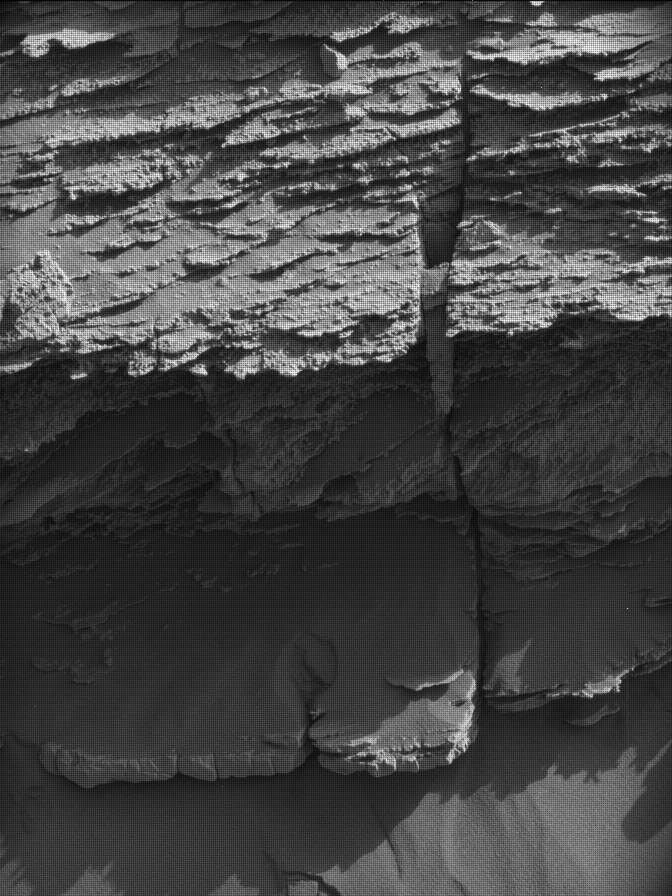Communicating with Curiosity requires creating a plan and transmitting it through various networks, including the Deep Space Network. Sometimes, one of these networks is down, and our plan does not get to the rover. That happened with Wednesday's plan, unfortunately. This morning, we had to respond to the loss of all the activities, deciding which to leave undone and which to replan. It turns out that it wasn't too hard to merge the lost plan and our intended weekend plan - if we postponed emptying the sample out of Curiosity's drill. I am the "Long Term Planner" for this set of sols, and I helped evaluate the implications of postponing this activity on what we can do next week. The team decided it was worth waiting to empty the sample, so we focused on merging two plans into one.
The activities from the Sol 2545 plan that we replanned include: the SAM gas chromatograph column clean-up; the ChemCam RMI of "Stony Side 2;" and ChemCam LIBS analyses of a wide white vein called “Bighouse” and a pebble called “Sliddery," with Mastcam documentation images.
The old environmental observations were not replanned because the team had some particularly interesting environmental observation opportunities in the weekend plan. Specifically, Curiosity is experiencing a cold season with relatively high humidity, so we planned a set of activities to see if frost is present on the soil right before sunrise. These include a ChemCam passive sky observation during the day to characterize atmospheric conditions, followed the next morning by pre-dawn ChemCam LIBS analyses of nearby soil to measure the hydrogen signature. The team chose the spot carefully and did a preliminary analysis to ensure good focus even in the dark. The image above shows the LIBS pits from the preliminary analyses. The pre-dawn LIBS observation will be followed by a Navcam atmospheric movie to look for clouds within 15 minutes of sunrise. A little later after sunrise, more atmospheric characterization is planned, including measuring the opacity of the atmosphere toward the horizon and upward, as well as taking various movies to understand winds and cloud formation. REMS will also provide wind data and air and ground temperatures. These suites of observations, planned in coordination, provide particularly valuable insights into atmospheric dynamics within Gale Crater.
Written by Dawn Sumner, Planetary Geologist at University of California Davis




































